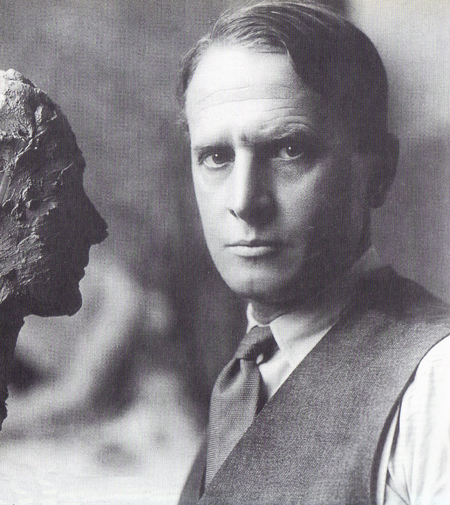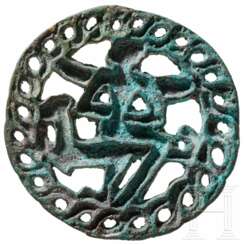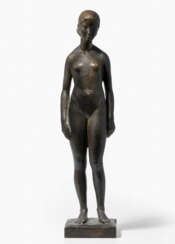weiblichem akt

Aristide Maillol was a French artist. He was a painter, sculptor, and printmaker, and is best known for his sculptural works.
Maillol initially worked as a painter, but after seeing Auguste Rodin's sculptures in the early 1890s, he turned to sculpture himself. His early sculptures were influenced by the classical tradition, and often depicted female figures in a simplified, stylized form.
Maillol's sculptures are characterized by their smooth surfaces and simplified forms, which reflect his interest in the pure and timeless beauty of the human body. He often worked in bronze, and his sculptures were typically larger than life size.
In addition to his sculptures, Maillol also created prints, including lithographs and woodcuts. His prints were often based on his sculptural works, and reflected his interest in simplifying form and line.
Maillol continued to work and exhibit his art throughout his life, and his work was shown in galleries and museums around the world. Today, his sculptures are held in the collections of many prestigious institutions, including the Musée d'Orsay in Paris, the Museum of Modern Art in New York, and the Tate Gallery in London.


Ernesto de Fiori was a German artist of the first half of the twentieth century of Italian-Austrian origin. He is known as a sculptor, draughtsman, and secular portraitist and is considered one of the leading artists of the Weimar Republic.
Ernesto de Fiori made a name for himself as a sculptural portraitist in Berlin during the so-called "Golden Twenties". He portrayed such celebrities as movie actresses Greta Garbo and Marlene Dietrich, boxer Jack Dempsey, Field Marshal Paul von Hindenburg. In 1936, the artist emigrated to Brazil and took up journalism. In 1937, the Nazi campaign to expose "degenerate art" led to the removal of his sculptures and graphics from German museums.








































